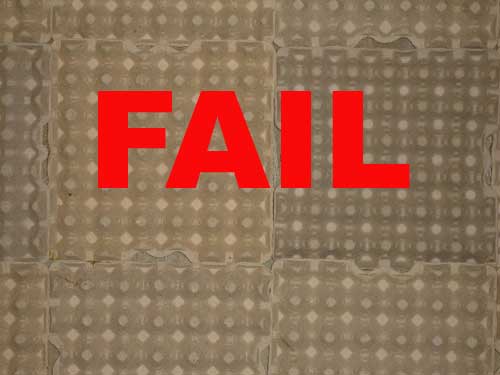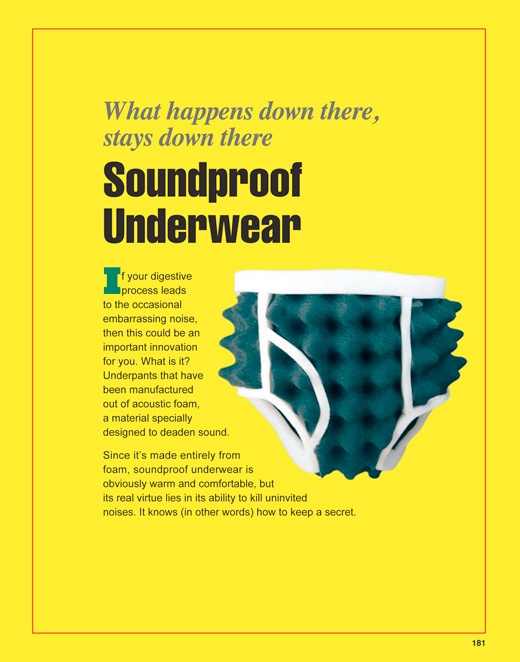Soundproof your bedroom at the flick of a switch: Elastic tubes that can be built into walls turn sounds on and off at will
- Helices of elastic created a material that acts as an on/off switch for sound
- Leaving the material uncompressed allows audible sound to pass through
- Compressing the elastic 'springs' reduces this noise by 30 decibels
- It could lead to new types of sound insulation that can be turned on at will
Topic Tags
Comments
Interesting, nice to see some innovative things in the materials
Interesting, nice to see some innovative things in the materials end of acoustics. I can't think of why in a residential situation you'd want to turn the soundproofing to 'off' but I could see in other areas where it may be useful. Cool to see people addressing this. Hopefully isolation will one day be a standard part of construction. It doesn't bother me much, but I live 40ft from a major highway, and I hear the swish of the cars go by, and can feel the bass when someone is pumping their subwoofers. I rarely actually notice the cars as I've lived here for so long.
Donny, I belive what where looking at is a mass-spring-mass design. In a mass-air-mass situation, like a room in room design, the airspace is acting like a spring would (for all into and purposes). When the walls deflect inwards and outwards the air is displaced momentarily, and the energy from the motion of the walls is dispersed.
A mass-spring-mass situation is similar, and relies heavily on the tensioning of the spring, and the weight it's subjected to. The idea being that the spring absorbs a certian amount of the (kinetic) energy from two moving masses. When executed properly the energy is absorbed and dispersed, between the effect of the resistance of the spring, and it's resulting motions. The energy is basically 'used up' before it can reach the other side.
This is basically how the shocks in your car function. Too much 'travel' (not enough tension) and your car will bottom out, the tires hitting the wheel well. Too much tension, and the ride again will be uncomftay stiff, because there is basically a hard connection between the body and the tires.
This concept is how floating floors work. And also why they are very mathematically intensive to design. Too much weight and it will not float, and have a hard connection/flanking path. Too little (not exactly sure on this part) and i belive none of the engery will be properly dispersed.
Basically the 'give' of the spring creates the decoupling because the two masses never ohysocally come into contact with each other, and any energy transmitted by movement is absorbed/dispersed.
This is at least how I understand it anyway. Maybe brien will have some corrections or another way to explain it.
Well, there's no doubt that you and Brien know way more about th
Well, there's no doubt that you and Brien know way more about this stuff than I do; and after you explained it, I'm beginning to understand. I guess what threw me was my thinking that by compressing those "springs", there would be less "give", and more contact being made when the springs were compressed; but now I understand that this is similar to a "floating" floor or wall.
Kmetal gave a good description of the basics as we apply them.
Kmetal gave a good description of the basics as we apply them.
But it is even more than that.
Harnessing deformation to switch on and off the propagation of sound:
"In the undeformed configuration the helices are in a compact state (see Figure 1 a) and the system is equivalent to a square array of solid cylinders in air, which is known to be characterized by a complete band gap induced by Bragg scattering."
The fascinating thing is that this model uses "Braggs Law". The interior workings of the prototype uses diffraction and whether the re-emitted wave interference is constructive or destructive (overlapping waves either add up and produce stronger peaks or are subtracted thereby reducing the audible level, in this respect).
"When fully open, sound audible to humans in the frequency range of 2.75–7.40kHz got through the material unaffected."
That is the target frequency range so this method does not consider the low frequency. It really only applies to what we hear as a human bean and in this case a pretty small band. A band we might throw an area rug or gobo at to subdue it.
In the compressed state the idea jumps right in line with more mass equals higher transmission loss of the assembly.
But the assembly wasn't sheetrock and the springs aren't springs!! The author comments "...an array of 36 elastic helices sandwiched between two sheets of foam-covered acrylic"
How do you get one of those grants is what I want :)
And if all that scientific mumbo-jumbo wasnt' enough, the author finishes with this statement, "We will consider using foam structures instead of solid helices to further reduce the volume fraction while maintaining good attenuation per unit mass."
Right...so after trying to dispel myths and educating people...these guys want you to put a Simmons BeautyRest mattress on the wall!!
I give up ;)
Only 30Db??? I thought a 2x6 staggered stud wall and 2 layers of
Only 30Db??? I thought a 2x6 staggered stud wall and 2 layers of drywall ( insulation filled )was some where around 55-60 Db isolation. I can appreciate what the new stuff does and its pretty neat... but I suspect there are areas which would be more application specific. maybe reflection reduction in the ceiling of a restaurant ... or a lecture hall... mind you 30Db is still pretty respectable... Metallurgy and plastics are really amazing these days!
I know with soundproof drywall which is heavy as hell, there's an elastomeric polymer in the middle filled with metal filings.. the drywall looks like an Oreo cookie..when sound hits the outer side of the drywall, the vibration, (sound pressure) gets converted to heat in the polymer and dissipated . Guess adding mass to the walls rings true.....
It is great to see things progressing!
What I want is a "computer controlled broadband absorber " that
What I want is a "computer controlled broadband absorber " that hangs on the wall, where from the comfort of my touch screen I can tune the absorber to the frequency range I want and notch or peak frequencies accordingly. I know its pretty star trek, but if we didn't have star trek and communicators, we probably would not have had the idea for cell phones...
Guelph_Guy, post: 435715, member: 47293 wrote: What I want is a
Guelph_Guy, post: 435715, member: 47293 wrote: What I want is a "computer controlled broadband absorber " that hangs on the wall, where from the comfort of my touch screen I can tune the absorber to the frequency range I want and notch or peak frequencies accordingly. I know its pretty star trek, but if we didn't have star trek and communicators, we probably would not have had the idea for cell phones...
Actually, personal visual communication devices came long before Star Trek.
You never read any old Dick Tracy re-issue comics? They re-issued all the 1930's and 40's Dick Tracy comics in the Sunday Funny papers when I was a kid in the 60's. That wrist watch he had where he could talk to The Chief and Bess and The Kid? That was seriously bad-ass... and Chester Gould had originally written those comics during WWII.
Gene Roddenberry was just a kid at the time. Who knows... maybe that's where he got the idea for Star Trek. ;)
Who knew that one day we'd all eventually end up carrying something like that around in our pockets everyday - and taking them for granted, too.
I still want my jet pack though. They told us in 1965 that we'd all have one by the year 2000. They lied.
... I want my jet pack. :X3:
Brien Holcombe, post: 435785, member: 48996 wrote: Sean I wouldn
Brien Holcombe, post: 435785, member: 48996 wrote: Sean I wouldn't know if this page is getting ranked or not. Just me and my wry attempt at getting a laugh while thinking about Soundproof your bedroom.
I don't want to be a wet blanket here, but I am curious about this system... so back to the OT for just a moment...
From what I've been able to understand, this form of soundproofing targets a specific range; a range that humans are most "sensitive" to... 2.5k to 7k (or so)...
What does this system do for those lower frequencies - say a truck driving down the road, or thunder, or anything else that could fall within that range; and, accordingly, how well will this system isolate those frequencies occurring on the inside of the room from getting out? ( Drums, bass, etc.) and pissing off the neighbors if you decided that you wanted to record drum tracks at 1 in the morning?
I'm trying to wrap my head around the possibility ( and the effectiveness) of this system being used in a "real world" situation, and a realistic function for a home studio. It's one thing to stop the tweeting birdies from waking you up too early in the morning - another situation altogether to use something like this as an effective solution for a studio environment.
Is this a viable option? Or, is it more that this system opens up possibilities to future soundproofing methods; in that once they've been able to successfully crack the code and attenuate certain frequency ranges from transference using this process and construction, that it's now just a matter of using this system and tweaking it to be able to do the same thing with other problematic frequency ranges?
And, in the end, will the other methods of sound proofing, those that already exist and that are already known and proven ( ie. construction methods) result in better isolation ( or worse), and which would ultimately be more effective - and less expensive?
...And I still want my jet pack.
d.






Wait a sec...I'm confused... Isn't the whole idea to decouple t
Wait a sec...I'm confused...
Isn't the whole idea to decouple the inner walls from the outer walls?
I must be missing something...